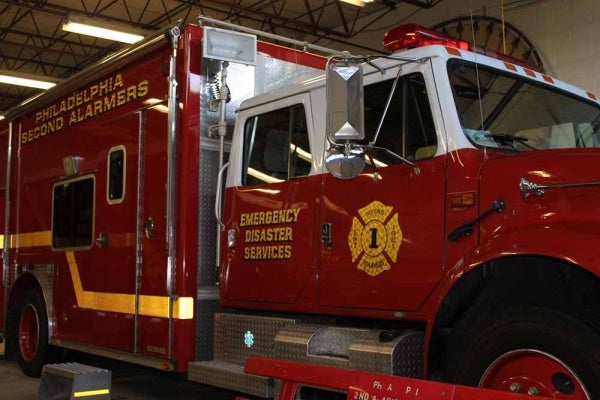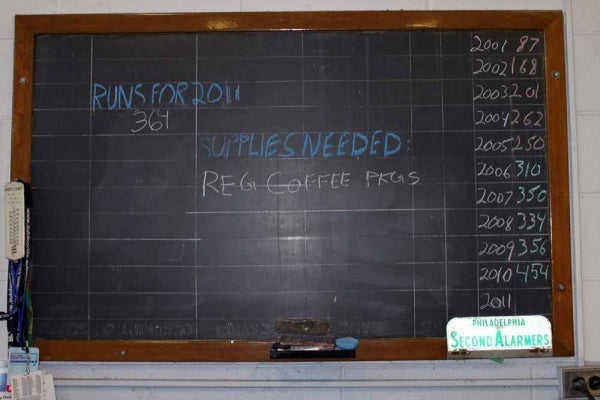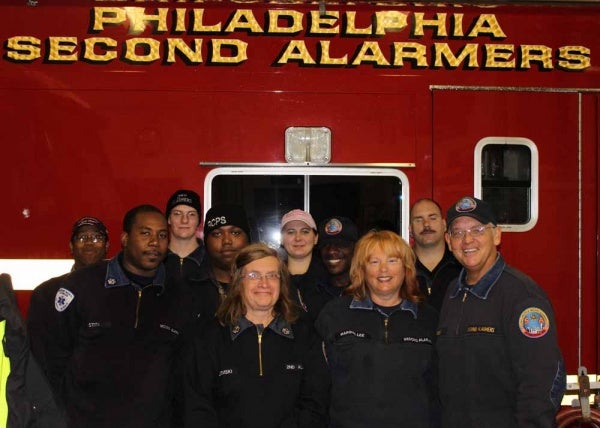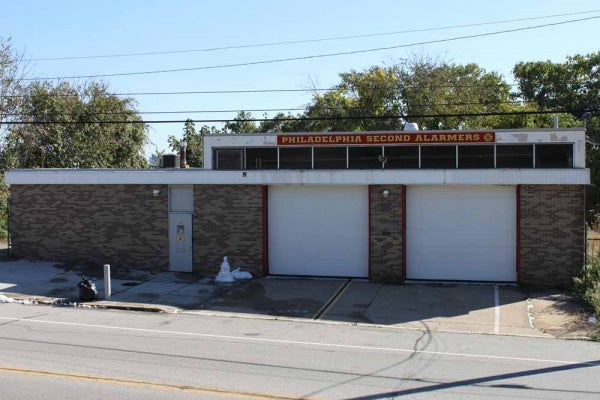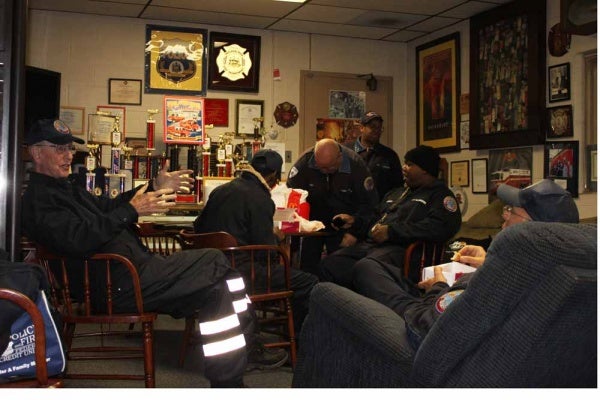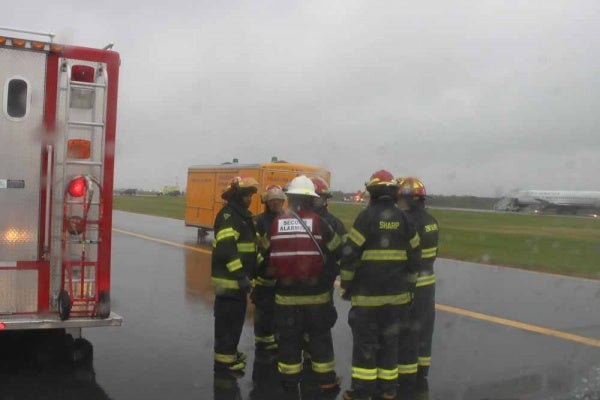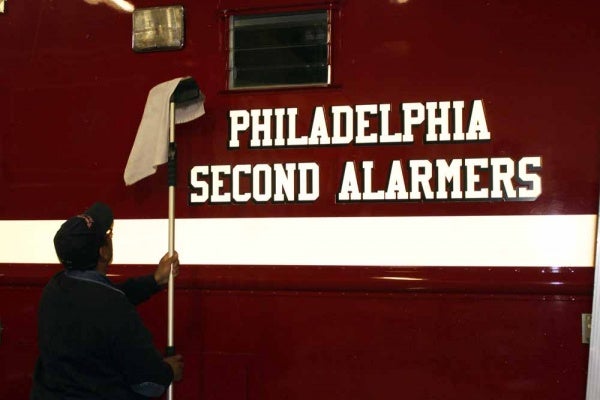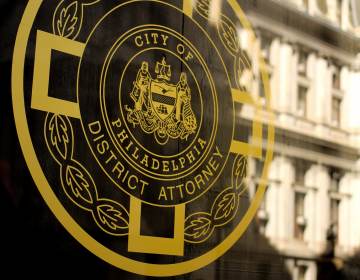Philadelphia’s Second Alarmers celebrate 90 years of service
This is not a drill.
On a recent Saturday morning, first responders and law enforcement personnel from local, state and federal agencies convened at Philadelphia International Airport for a simulation of a “Code 89” – a suspected explosive device on board an inbound passenger jet.
The scenario, conducted on a remote runway near Gate 14, constituted the 2011 EPEX drill, an FAA-mandated emergency preparedness exercise that tests the responsiveness of airports and emergency workers to potential threats.
However, of the hundreds working in wind, hail, and sleet on this isolated stretch of concrete, only one of the many agencies present is not simply performing an exercise.
This organization is on hand to provide relief and rehabilitation to firefighters and police in need of something to eat and something warm to drink.
They’re the Second Alarmers. And they just turned 90.
90 years and counting
Friday, Nov. 4, marks the 90th Anniversary of the Philadelphia Second Alarmers. The East Falls-based outfit, founded in 1921, is an all-volunteer group that began as a “canteen” service – providing beverages and other sustenance to firefighters and police officers at emergency sites.
“We provide creature comforts,” says Second Alarmers Chief Greg Masi.
Chief Masi – by day, a sergeant in the Philadelphia Police Department’s Communications Division – oversees the operations and administration of the organization’s 18 full time and 5 probationary members on over 400 responses a year.
While the group still retains its primary fireground canteen mission, under Masi – whose tenure as chief dates to 2002 – the Second Alarmers have expanded their services to include generators, flood lighting, radio battery exchanges, heating and cooling supplies and equipment, and replacement clothing, as well as EMS and mass-casualty response capabilities.
“We’re the closest thing to a mother on the fireground,” he proclaims.
Second Alarmers are available for dispatch 24 hours a day – all are issued beepers – and many spend nights or weekend on duty to monitor Philadelphia Fire Department radios, anticipating calls. Members are expected to participate in 25-percent of emergency responses – runs – and details such as the EPEX drill.
A call to service
Arriving at the runway, the Second Alarmers stage their apparatus on a taxiway parallel to the US Airways jet being used in the exercise.
“All right, it’s show time,” says Lt. Walt Pearson, as he parks the vehicle known as SA-1, a specially-designed truck that carries five crew members, and has coffee makers, a stove, and water storage tanks, along with various medical supplies, tools, and a generator.
In the galley of SA-1, Marsha Lee Masi – Chief Masi’s wife – and Quasan Baker begin their preparations.
After beginning the coffee and readying the hot chocolate, Marsha pauses to explain the versatility of the truck – and the crew.
“I can cook in here,” she says. “I can make the firefighters beef stew – they don’t even know it’s canned,” she adds, a testament to the techniques gleaned in her other life as a concessions manager.
As the provisions reach the final stages of preparation, the first patrons of the day arrive – firefighters from the Public Information Office. For anyone working the truck, it’s a chance to serve, but for Quasan, the moment is a proud opportunity – it’s his father.
“How’d you draw dry duty?” asks a drenched Lt. Clifford Gilliam of his son.
While some Second Alarmers are manning the service trucks, five others – those with EMS certification – are marching out to the runway to participate in the exercise.
Second Alarmers rarely participate in operations on the fireground, but they have skill-sets that can be drawn upon by an incident commander in times of extreme need.
As such, they’re queuing with Philadelphia firefighters in order to practice the transfer of victims from triage areas to waiting ambulances.
Uniting in bad weather
While they’re taking some good natured ribbing – “Hey, where’s the hot chocolate?” says one black-helmeted firefighter – there is also a sense of welcome in the air – “You guys are all-right,” says another firefighter – due in part to their tradition of service and to the miserable weather that unites them all.
A captain from the EMS division, spotting Chief Masi and his company of EMT’s, says in complete deadpan, “Hey, Mr. Second Alarmers, I think we’re going to need the cooling fans and the misters,” referring to some of the unit’s warm-weather services that are wholly inappropriate for the ambient meteorological conditions.
Back in SA-1, Marsha and Quasan are hosting a guest from the PFD Visual Communications Unit, FF Mark Stewart.
He recalled his initial experience with the Second Alarmers.
“I remember my first extra alarm,” he says, denoting a fire that requires additional personnel and equipment.
“Someone says to me, ‘let’s go get a cup of coffee.’ I say, ‘where are you going to get a cup of coffee at a fire?’ And then,” in reference to a long-since-replaced Second Alarmers vehicle, “there was this old, beat-up truck.”
Stewart concluded his story with this appraisal – “When you have icicles hanging off your mustache, there’s nothing better than a hot cup of coffee.”
It’s this sense of gratitude that sustains the Second Alarmers.
Thanks and praise
“We can’t thank them enough, or praise them enough,” says Firefighters Local 22 President Bill Gault.
The Second Alarmers’ annual budget is approximately $90-thousand, much of which is raised through donations from firefighters and police officers – some through direct payroll deductions. The city contributes free fuel, protective clothing known as bunker gear, as well as training sessions at the Fire Academy.
This differs from peer departments such as the FDNY, where rest and rehabilitation units are incorporated within the department and are staffed by limited-duty firefighters.
Asked to calculate the savings to the PFD, Fire Commissioner Lloyd Ayers estimated that it would be “a million (dollars) plus.”
For Ayers, however, it’s more than numbers – “It’s a feel,” he said. While the department has looked at professionalizing R & R services, he pointed out that some things aren’t quantifiable.
“They’re an integral part of us,” said Ayers. “You could say that they’re invaluable.”
At the East Falls station
After the conclusion of the EPEX drill, the Second Alarmers retire to their station on Roberts Avenue. The station, built in 1973, is an unimposing tan-and-brown brick edifice, situated behind the Abbotsford Homes on land donated by the now-defunct Budd Company.
Behind the two bay doors are the three pieces of apparatus, storage space, and a kitchen, along with quarters for the crew, which includes a three-bed dormitory and the chief’s office.
Unlike many firehouses, where the kitchen is generally regarded as the nerve-center, at the Second Alarmers’ station that honor is assigned to the bunk room, which holds their significant collection of fire memorabilia and is where members monitor radios, relax, and conduct debriefings after runs.
Around the table and scattered in chairs and couches, members discuss the high and low points of the morning’s exercise, punctuated by alert tones from the radio’s loudspeaker. It is here that lessons are learned from previous runs, and where the proud traditions of the Second Alarmers are passed along.
Assistant Chief George White, whose tenure with the Second Alarmers dates to 1948, gave testimony to the evolution of attitudes and practices within the fire service.
“In those days,” said White, in comparison to now-standardized practices of rehabilitation, “you were considered a wimp if you couldn’t go a couple of hours without something to eat or drink.”
If one were to look at records from approximately 12,500 runs – all of which are scrupulously maintained by SA chiefs – it would be noted that in the early years, in addition to packages of chewing tobacco, bottles of seltzer water were distributed with regularity.
Chief White explained.
“In those days, before SCBA (self-contained breathing apparatus), we used to give the firefighters charged seltzer water bottles in order to help them cough up all the smoke they inhaled.”
While technology changes and service continues to evolve, the commitment of Second Alarmers to their duty is resolute. However, attracting new members is an ongoing concern.
Recruiting new members
“Like every volunteer organization, recruitment is the big problem,” said Masi. “It’s hard to recruit people to do what we do.”
Benn Prybutok, Director of Fire Science Studies at Montgomery County Community College, reinforced the difficulty of recruitment, adding that it’s a persistent problem across state for volunteer fire departments.
Prybutok suggests that changing demographics are a likely cause, citing a shift in occupational trends away from self-employment.
“It’s easier to get away when you run your own business,” he noted.
To attract new members, Masi maintains a Second Alarmers Facebook page, and promotes the advantages of volunteering in a major urban area.
“It’s a big city,” he said. “There are a lot more runs here than in a suburban department.”
‘Hearts as big as this city’
What retains members are the two words written across their insignia – service and dedication.
For Second Alarmers Captain David Park, it’s a means of being a part of an organization with history and tradition.
Growing up in Philadelphia, his formative experiences were shaped by his interactions with firefighters at Engine 55, Ladder 22.
“They showed me how to be responsible, how to be involved,” said Park.
Today, his service is a tribute and testament to their impact on his life.
“It’s a way of me giving back to the firefighters,” he said.
This sense of loyalty and dedication is not unique to Capt. Park – according to Chief Masi, it’s a virtue shared equally by all Second Alarmers.
“Everyone here,” said Masi, “has hearts as big as this city.”
For more information, visit the Second Alarmers’ Facebook page or call 215-223-1936.
WHYY is your source for fact-based, in-depth journalism and information. As a nonprofit organization, we rely on financial support from readers like you. Please give today.


